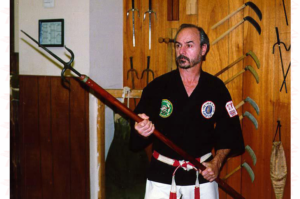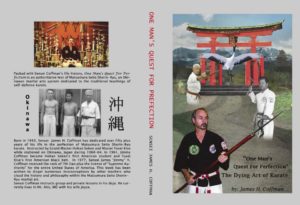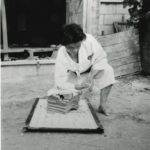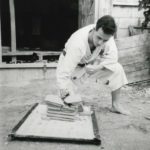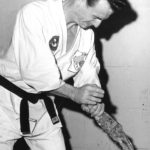The Oriental Instructor
So much has been said about learning/training in the Art’s from an “Oriental instructor” as opposed to an “American” or someone other than an Oriental. The image being that the Oriental training will be better. Not necessary true!
There are a lot of great Okinawan instructors both here in the States as well as locations all around the world, but that does not mean they have a lock on real or true training today.
The days of the Sakugawa’s, Matsumura’s, Motobu’s, Chibana’s, Soken’s, Nagamine’s, Nakamura’s, Nagazato’s just to mention a few are long gone. The son’s that they left behind are “NOT” and for the most part any way near their father’s skill or abilities. Those that lived and trained in the late 1800’s and up to the early 1900’s went through a different time. The training back then was harder, more real and often based upon life and death.
The US is responsible for the popularity of Okinawan Karate around the world today. If it had not been for the wars; World War 2, Korean and the Vietnam War, Okinawa would have been a little to unknown Island located in the Pacific.
Way too much importance is placed on the belief that an Oriental instructor is better than a non-Oriental instructor. This is simply not true. The Okinawan masters of today are for the most part the same age as the US soldiers that were trained by the same instructors as the Okinawans back in the 50’s and 60’s. The main difference is that the Okinawan son’s that were trained by their fathers back in the 50’s & early 60’s could spend more time with their training directly under the tutelage of their fathers, thus giving them a more direct knowledge of their system.
The Americans trained just as hard if not harder than the Okinawans. The Americans, for the most part spent only one to two years training on Okinawa. The tour for a single airman (Air Force) on Okinawa was just 18 months, the Army, Marines and Navy would have had even less training if they went to Vietnam. So the actual training for one that spent only one tour on Okinawa would be 12 to 16 months at most for the Airman if they did not go TDY somewhere, (I spent 3-1/2 years, five hours a day, seven days a week) and even far less for the other branches. Most of the soldiers were TDY’ed to Vietnam for a portion of their tours. Some went back and forth, others went to Japan or Korea as well.
The Masters of today on Okinawa such as Zenpo Shimubukuro and Nishihara, (now deceased) one’s that I trained and completed against or with, were the same age as I was when on Okinawa, 17- 21 years old, we were mere kids.
From what I have seen during my last three trips to Okinawa (in the 1990’s & early 2000’s) is that the Okinawan karate has become more and more commercial. It has often been said that “the day will come” that if one wanted to learn the old styles and training methods of Okinawa, they would have to look here in the States.
The big difference is that the Okinawan karate (Okinawan teachers on the Island) has been moving towards the commercial karate of today, whereas the older GI’s that trained back in the 1950’s and mid 1960’s that were trained by the now deceased Okinawan greats. A few of us for the most part have not changed. We still teach the way we were taught in the late 50’s and early 60’s. That is not to say that the GI’s that came back from Okinawa in the 50’s & 60’s have not changed to the more commercial methods also. Okinawan karate went through a major change during the mid 60’s (1967 on).
Those of us (the very few) that did not change by cross training to other systems/styles still remain traditional and true to our respective Art’s. The problem was that 90% of all those that reached the (back then) coveted black belt on Okinawa, returned home as a Sho-Dan or Ni-Dan and searched out other existing karate schools/dojo’s to join and train with or simply stopped training all together.
Whereas I did not! I saw that the system I was trained in had everything one could ever want in true karate. I went to every karate dojo within a fifty mile radial of my home. I found nothing as good or better, so I started my own dojo(s) keeping true to my system. The 90% that did not start their own dojo became a part of the existing systems. They now have a bastard system, parts from their original training and parts of the system they started to learn at an existing dojo. I hear all the time I have kata from one system and weapons from another, strength training yet from another. Most even learn from the internet/Youtube. This does not mean it is no good, I’m not saying that. What I am saying is Karate is a fighting Art and if you train in different systems, taking this from one and that from another you end up with a bastard style. The commercial karate’s no longer fight using “Bogozuki” (Okinawan fight protective gear), they teach light to little, to no contact. One is a product of how one trains. If you train with no contact how can you learn how strong your punch or kicks are when applied against another for real? How can you learn what really works and what doesn’t? …..You can’t!
I think a lot of the Karate here in the States is as good and some times better than what is being taught on Okinawa today.
